Poisonous flowers can light up a garden with color, fragrance, and charm, yet some hide a darker side beneath their petals. Many contain toxins that can harm people and pets, causing anything from mild irritation to severe illness.
A few are so dangerous that even a small taste or accidental contact can lead to serious health problems.
Knowing which blooms pose a risk allows you to enjoy their beauty without endangering yourself, your family, or your animals. Some belong high in planters or behind garden barriers where curious hands and paws can’t reach.
As you explore this list, you’ll see how breathtaking and hazardous nature can be all at once.
#1 Poinsettia
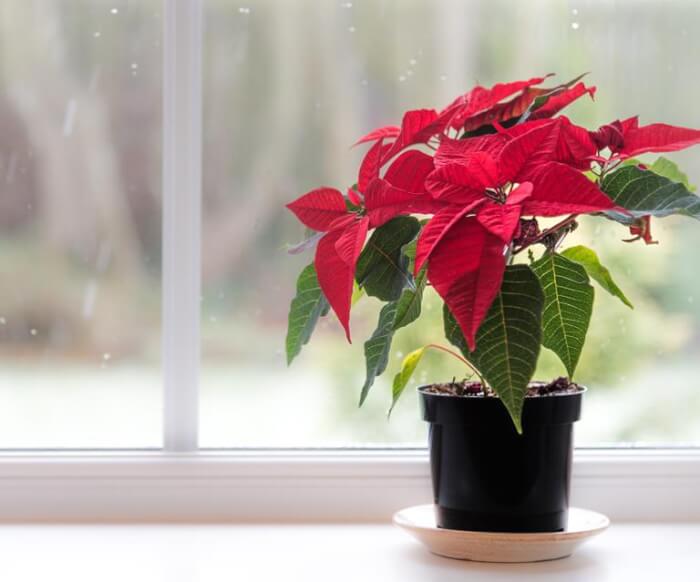
Poinsettias brighten winter days with their bold red bracts, but their sap can irritate skin and eyes. Ingesting any part may cause nausea, vomiting, or diarrhea, particularly in pets. The toxins can also trigger breathing issues in sensitive animals.
Wearing gloves when handling the plant helps avoid irritation. For homes with curious cats or dogs, it’s safest to keep them well out of reach.
#2 Rhododendrons
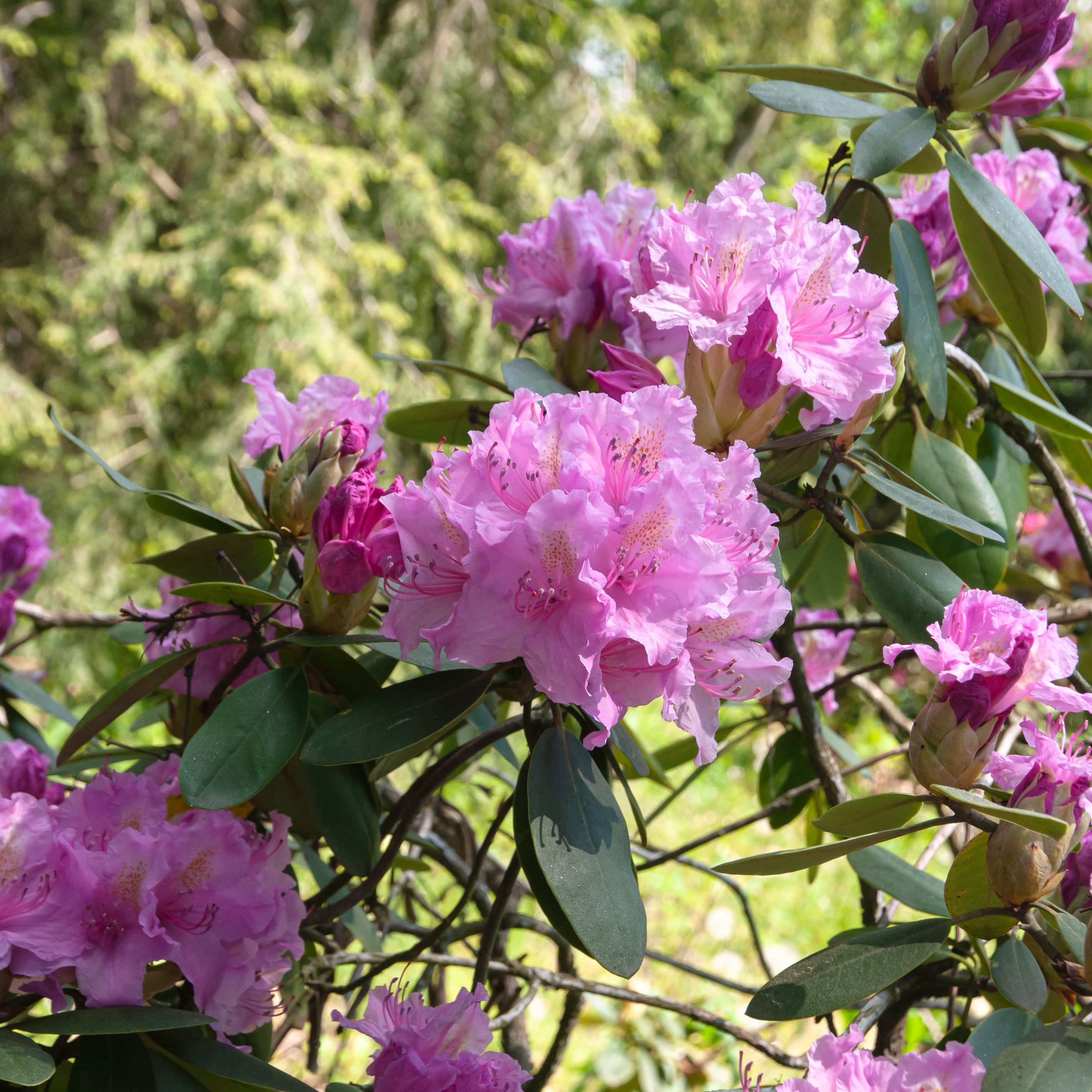
One leaf is enough to cause vomiting, drooling, or weakness in both humans and animals. The grayanotoxins in rhododendrons can affect the heart, leading to dangerously low blood pressure or even coma.
Symptoms can appear quickly after ingestion. If you grow them, placing them far from play areas reduces the risk. Prompt veterinary or medical attention is vital if poisoning is suspected.
#3 Gloriosa Lilies
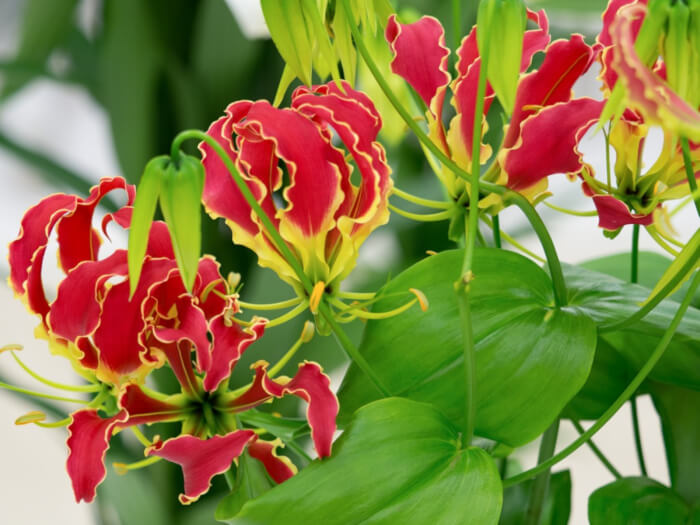
Gloriosa lilies are striking climbers, yet all parts contain colchicine, a potent toxin. Ingestion may bring severe nausea, abdominal pain, and diarrhea. Larger amounts can lead to muscle weakness, convulsions, or organ failure.
Growing them in hanging baskets or high trellises keeps them safer to admire. Anyone handling the tubers should wear gloves to prevent accidental exposure.
#4 Tulips

Tulip bulbs store alkaloids that can cause stomach upset, dizziness, or convulsions if eaten in large quantities. Pets, especially dogs, are drawn to digging them up, which makes planting depth and barriers important.
Skin contact may lead to mild irritation in some people. Choosing a safe planting location prevents accidental encounters. After handling bulbs, washing hands well is a smart precaution.
#5 Coneflowers
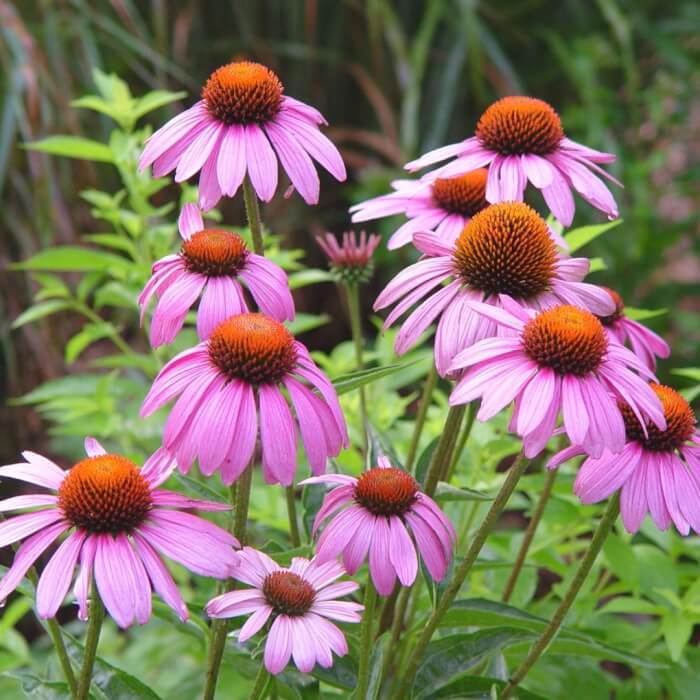
Coneflowers carry pyrethrum alkaloids that may cause skin irritation or allergic reactions. Contact with the eyes or mouth can bring redness and discomfort. Gardeners with sensitive skin often wear gloves when pruning or planting.
The blooms still attract pollinators and add color, so thoughtful placement works best. Keeping them away from high-traffic paths lowers accidental contact.
#6 Bird of Paradise
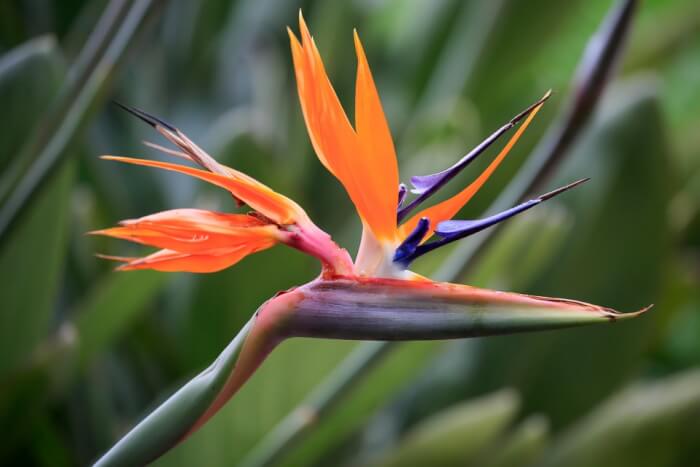
Known for their tropical look, Bird of Paradise plants hide toxins in all parts. Ingestion can cause nausea, vomiting, or drowsiness. The seeds hold higher concentrations, making them more dangerous to pets.
Positioning the plant in a decorative but unreachable spot can help. If grown indoors, ensure fallen flowers or leaves are cleaned up promptly.
#7 Iris
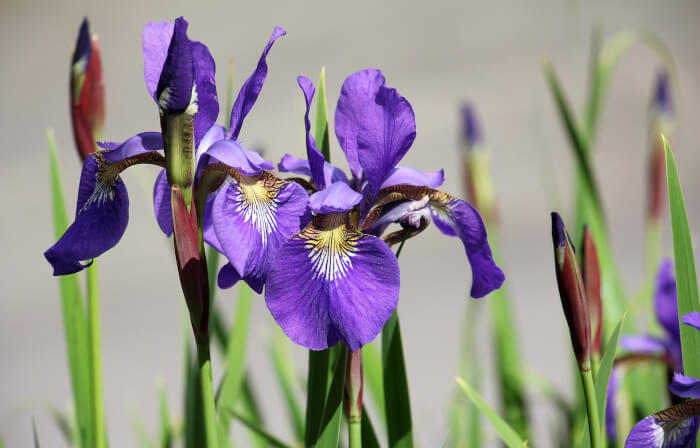
Iris plants contain irritating compounds that can cause rashes or stomach upset. People with hay fever may notice worsened symptoms around them.
Ingesting rhizomes is particularly risky for pets. Using gloves during division helps protect skin. Keeping pets away from freshly cut iris leaves or roots prevents accidental nibbling.
#8 Hydrangeas
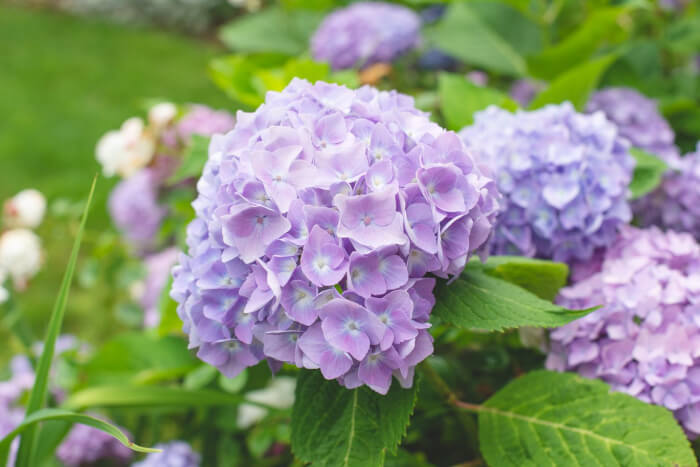
Hydrangeas contain saponins that can cause diarrhea, vomiting, or lethargy if eaten. The effects are usually mild but unpleasant.
Pets may be tempted by fallen blooms, so quick cleanup is wise. Some gardeners prefer growing them behind fences to limit access. Wearing gloves can help avoid skin irritation during pruning.
#9 Bluebells
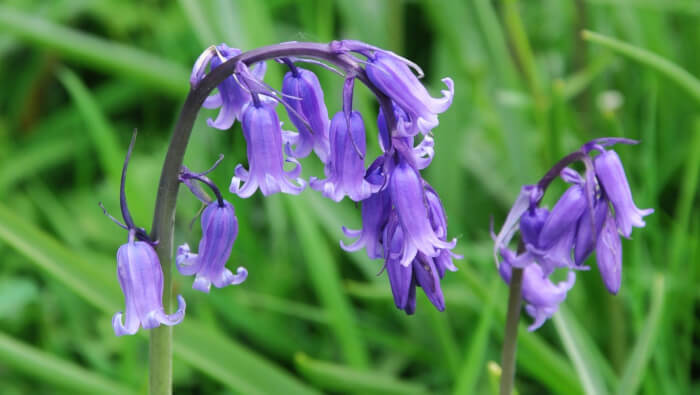
Bluebells may look gentle in woodland borders, but they carry toxins that affect the heart and nervous system. Eating them can cause numbness in the mouth, dizziness, or even seizures if consumed in larger amounts.
The sap can irritate skin, especially for children or those with sensitive skin. Gardeners often wear gloves when moving or cutting them. If pets roam freely, it’s safer to grow bluebells in contained beds or raised areas.
#10 Hemlock
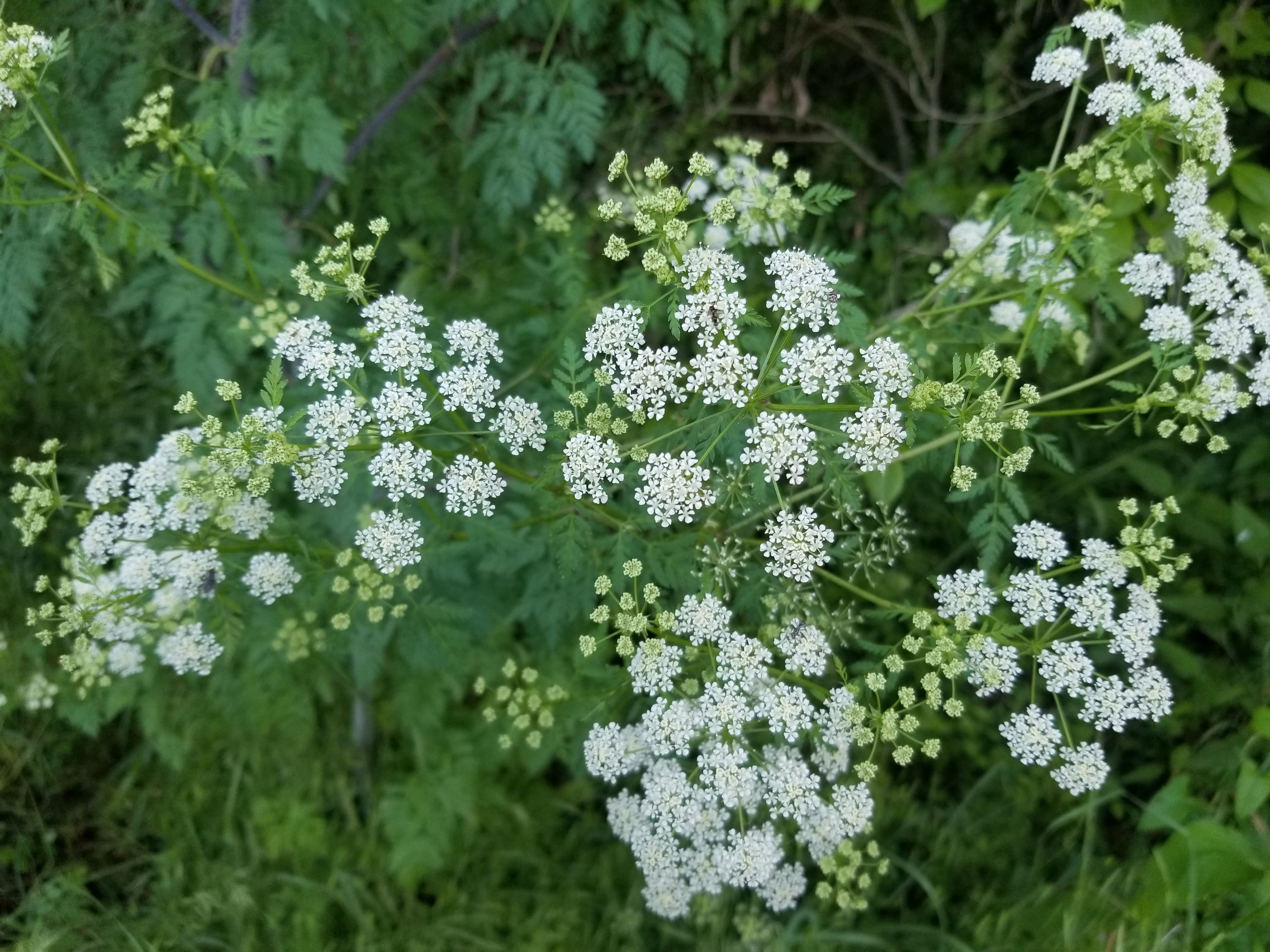
Every part of hemlock is highly poisonous, containing alkaloids that can shut down the nervous system. Even a small taste can bring on breathing difficulties, tremors, and eventually death.
Its fern-like foliage can be mistaken for harmless plants, which makes identification important. Wearing gloves and disposing of it carefully helps avoid accidental contact. Hemlock is best removed entirely if found growing near homes.
#11 Wisteria
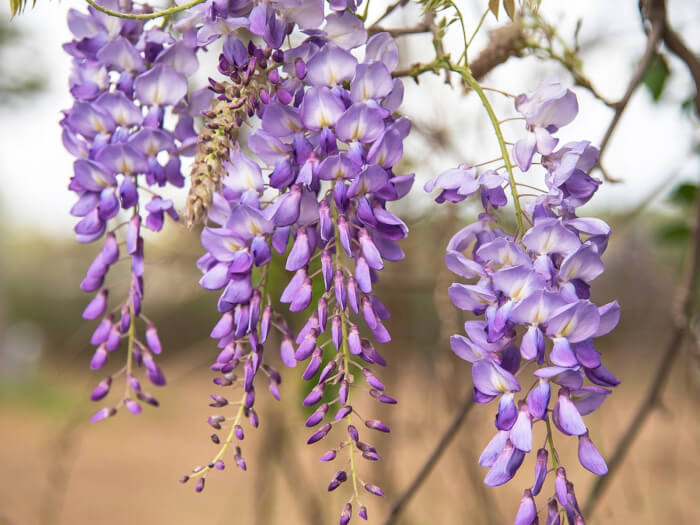
While admired for its cascading blooms, wisteria contains glycosides that can upset the stomach. The seeds and pods are particularly toxic if swallowed.
Contact with the sap may also lead to mild skin rashes. Keeping wisteria pruned and sweeping up fallen seed pods reduces risk. If growing on a pergola, ensure it’s not near children’s play spaces.
#12 Oleander
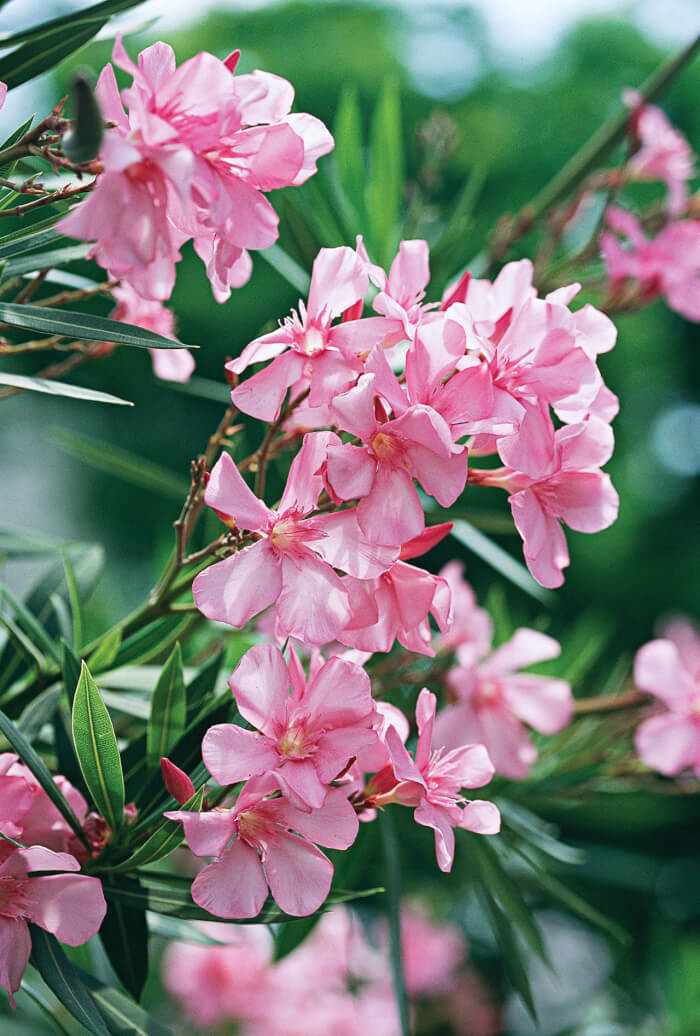
Oleander is beautiful yet among the deadliest ornamental plants. All parts contain potent cardiac toxins that can cause irregular heartbeat, vomiting, and confusion.
Ingesting even small amounts can be fatal to both people and pets. Gloves are a must when pruning, and all clippings should be disposed of securely. Many gardeners admire it only in public landscapes rather than home gardens.
#13 Snowdrops
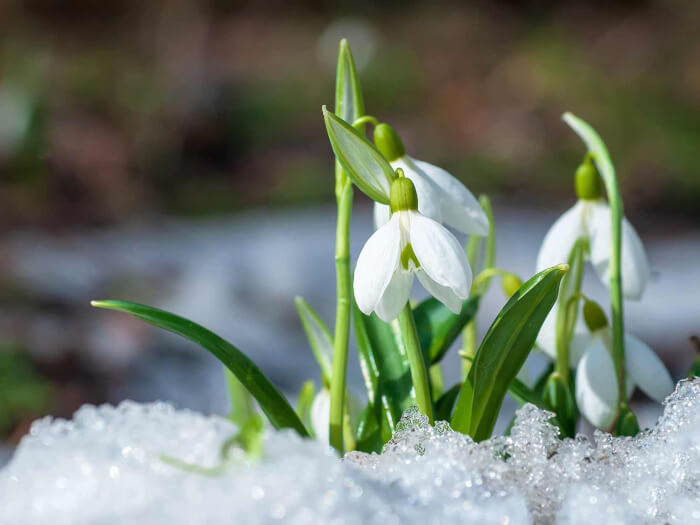
Snowdrops may signal spring, but they hold alkaloids that cause nausea and diarrhea if eaten. The risk is higher for pets and small children who might sample the bulbs.
Handling the bulbs with bare hands can sometimes cause mild skin irritation. Planting them deeper in the soil helps keep them out of reach. Always wash your hands after working in areas where they grow.
#14 The Azalea
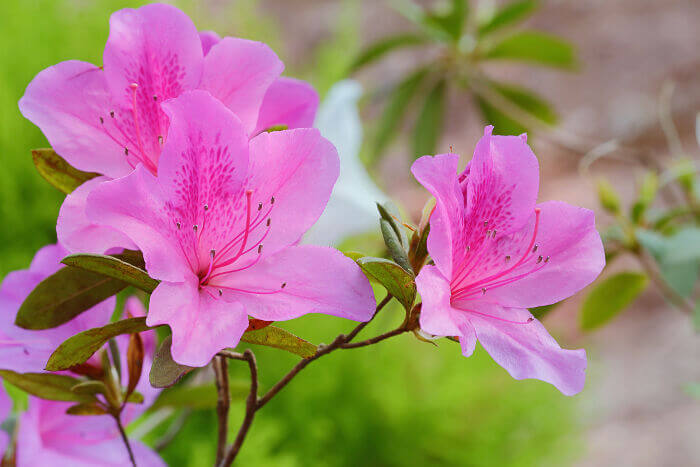
Azaleas carry grayanotoxins that disrupt the heart and nervous system. Even small bites of leaves or flowers can cause vomiting, weakness, or dangerously low blood pressure.
They thrive in many gardens, so thoughtful placement is key. Raised planters or fenced garden beds can keep them away from pets. Protective gloves help when trimming large bushes.
#15 Daffodil
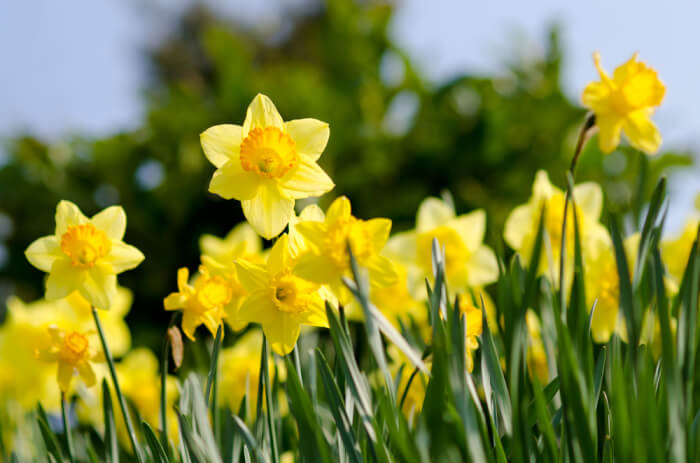
Daffodil bulbs and leaves contain lycorine, which can trigger vomiting, stomach cramps, and headaches. The bulbs are the most toxic and can be mistaken for onions when stored.
Gardeners often label stored bulbs clearly to prevent mix-ups. Wearing gloves during planting avoids skin irritation. Keeping pets from digging in bulb beds is also important.
#16 Chrysanthemum
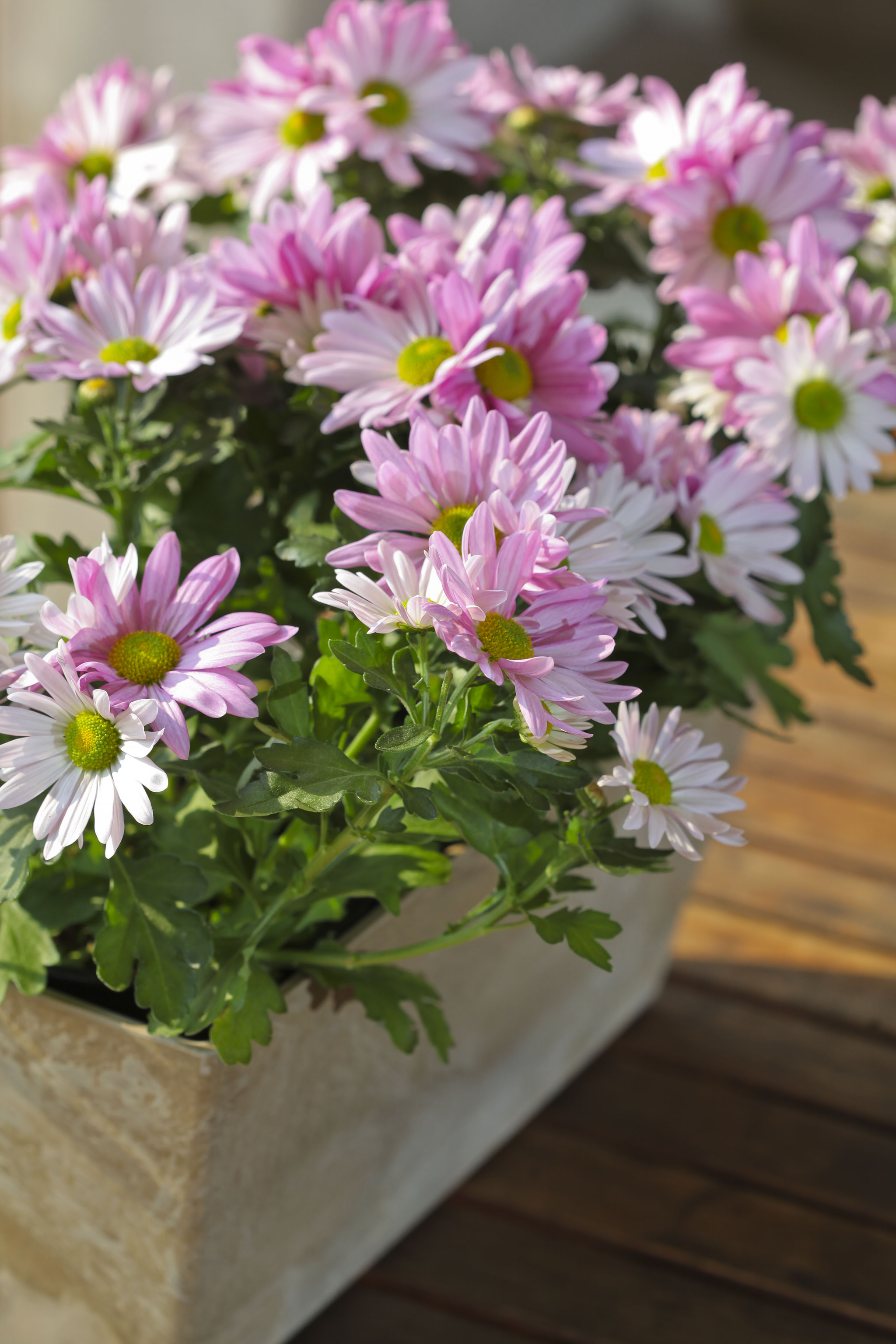
Chrysanthemums contain pyrethrins that can irritate skin and cause nausea or vomiting if eaten. Pets, especially cats, are sensitive to these compounds.
Handling them with gloves can prevent rashes for those prone to allergies. Cutting back stems after bloom season keeps the garden tidy and lowers exposure. Fallen petals should be removed if animals are present.
#17 Cyclamen
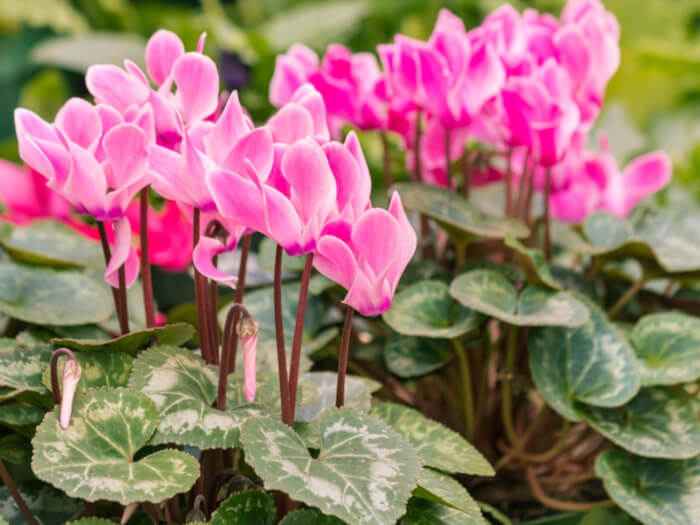
Cyclamen tubers contain toxins that can cause drooling, vomiting, and even seizures in pets. The petals are less dangerous but can still bring stomach upset if eaten.
Their vibrant blooms make them popular indoors, but high shelves or hanging baskets are safest. Avoid placing them where pets can dig into the soil. After handling, a quick hand wash helps prevent irritation.
#18 Desert Rose
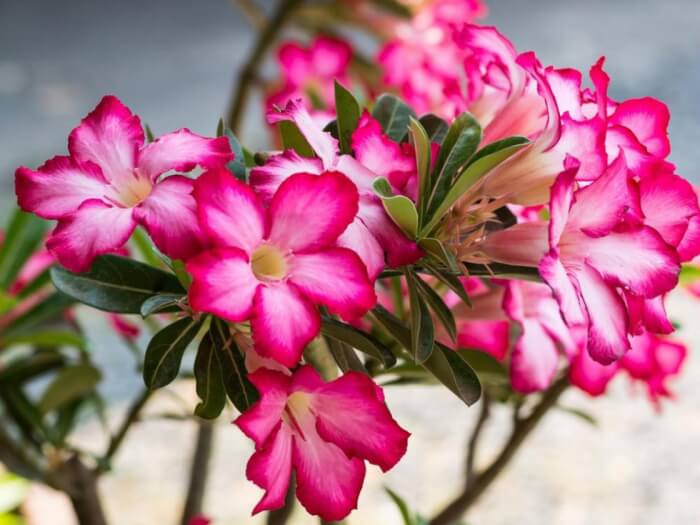
The desert rose has sap that contains cardiac glycosides, which can lead to vomiting and diarrhea if consumed. Its striking blooms and sculptural form tempt gardeners to place it prominently, but positioning it away from pets is wise.
The sap can irritate skin, so gloves help during pruning. Dispose of cuttings carefully to prevent accidental ingestion. Avoid planting it along paths used by children.
#19 Calla Lily
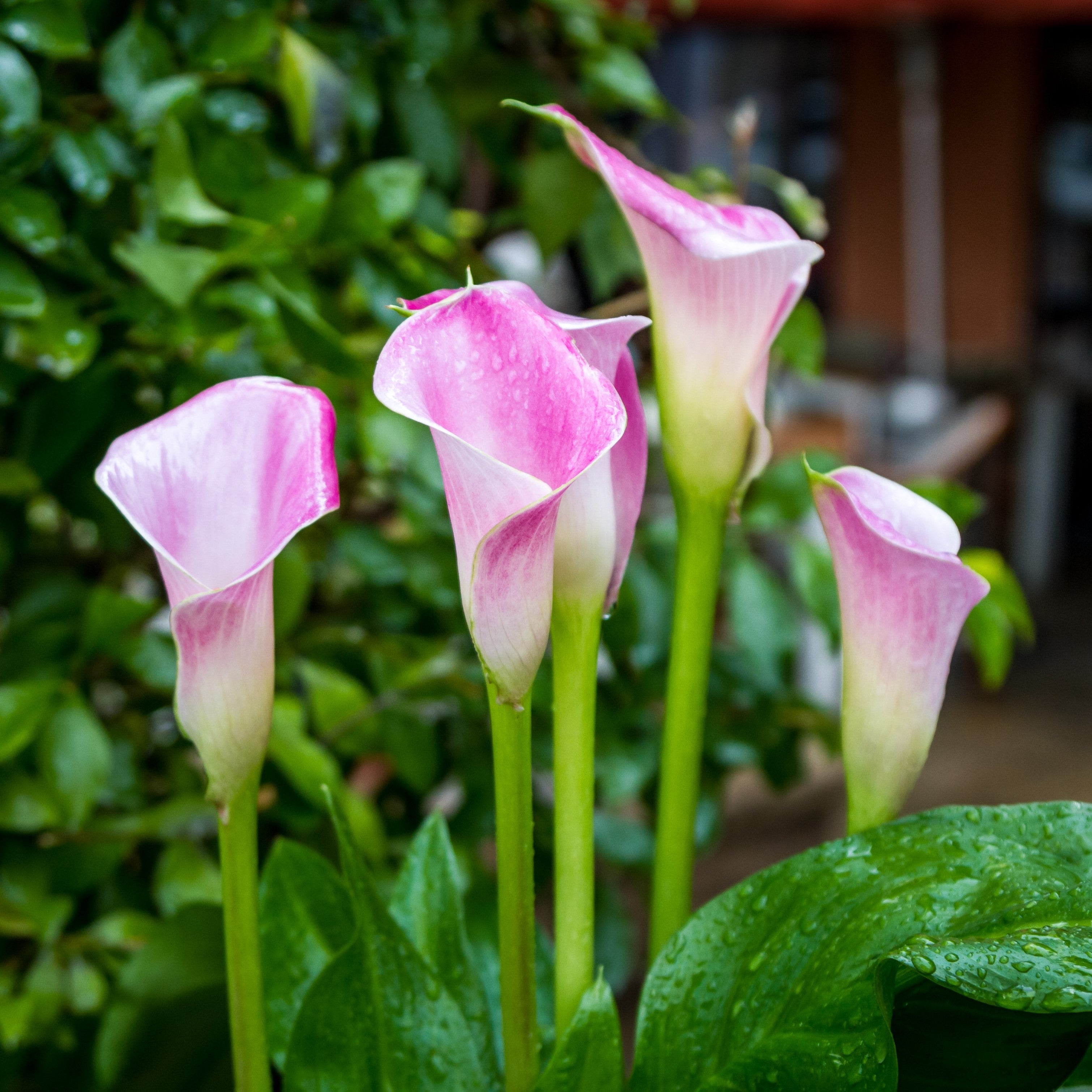
Calla lilies contain calcium oxalate crystals that cause burning sensations and swelling in the mouth. Ingesting even a small amount can lead to excessive drooling or difficulty swallowing.
They are safer when grown in outdoor beds away from curious pets and children. If handled frequently, gloves prevent skin irritation. Indoors, they work best as a display on high tables.
#20 Larkspur
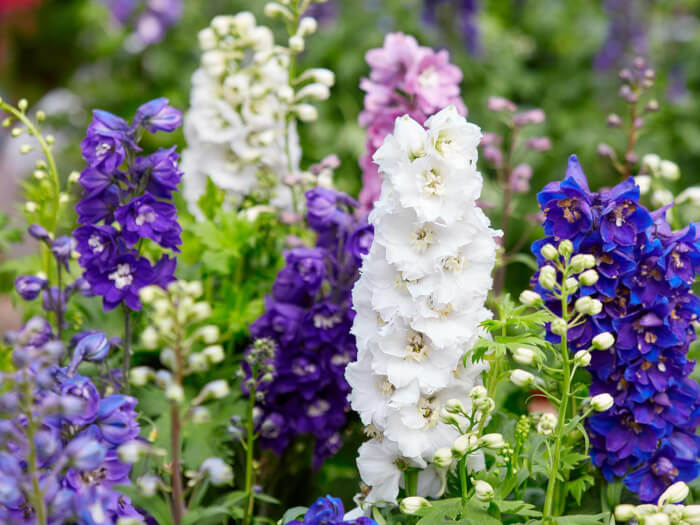
Larkspur plants hold alkaloids that can cause nausea, weakness, or even heart failure. All parts are toxic, but young seedlings are especially dangerous to livestock.
Gardeners often grow them in fenced areas to protect grazing animals. Wearing gloves helps when removing faded stems. The tall blooms remain beautiful, so careful placement is key to safety.
#21 Bleeding Heart
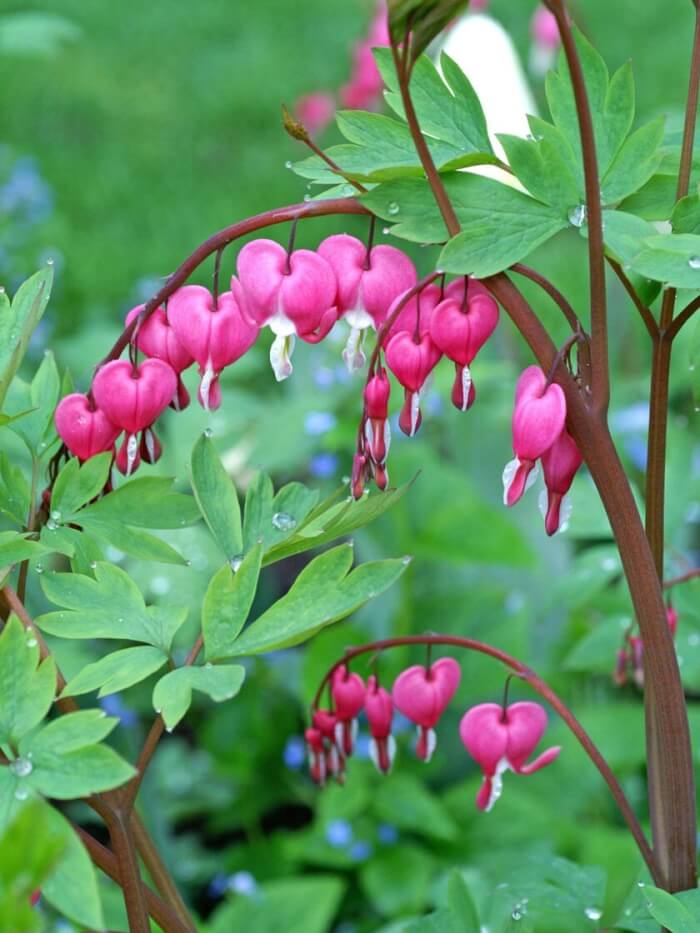
Bleeding hearts contain alkaloids that may cause dizziness or seizures if eaten. The sap can also irritate skin, particularly for those with allergies.
Growing them in shaded garden spots away from paths minimizes accidental contact. If trimming back foliage, gloves and long sleeves offer extra protection. The delicate flowers remain a visual highlight when handled responsibly.
#22 Milkweed
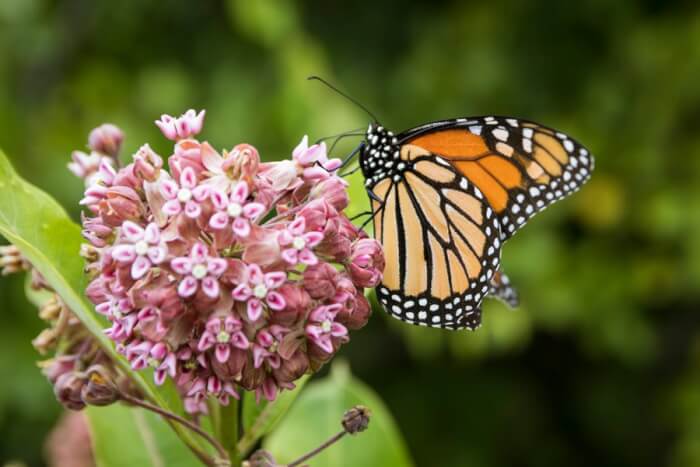
Milkweed produces milky sap rich in toxic glycosides, which can cause stomach pain, diarrhea, or even heart issues if eaten in large amounts. The sap can also irritate eyes and skin.
Despite its toxicity, it’s vital for monarch butterflies, so many gardeners plant it in controlled areas. Wearing gloves and washing hands after handling prevents problems. Fencing off milkweed from pets is a smart safeguard.
#23 Easter Lily
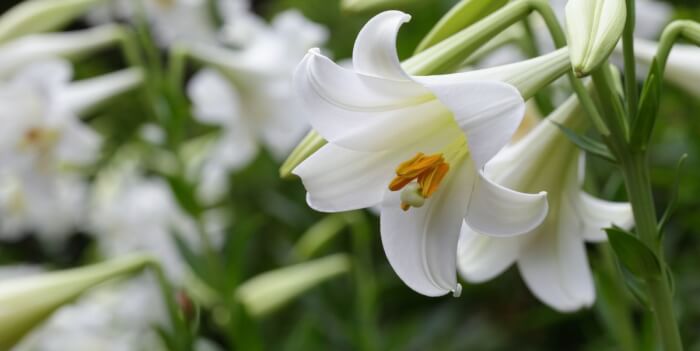
Easter lilies are highly toxic to cats, causing kidney failure even from small exposures. For humans, they can cause nausea and vomiting if ingested.
Keeping them as indoor decor works only if pets cannot access them. After handling the flowers, washing hands prevents accidental transfer. Many pet owners choose artificial lilies for safety.
#24 Foxglove
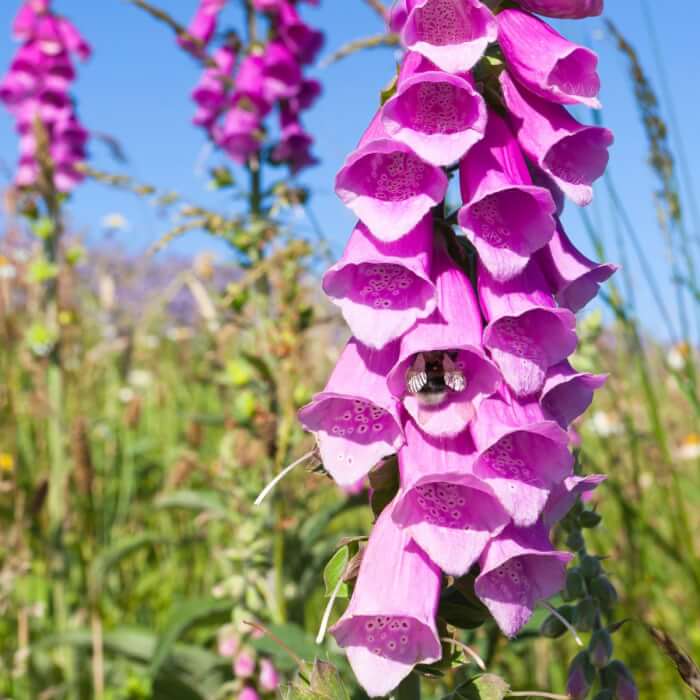
Foxglove is a source of digitalis, a heart medication, but in raw form, it’s dangerously toxic. Ingesting leaves or flowers can cause nausea, irregular heartbeat, and even death. Gloves protect hands from sap during pruning.
Growing them behind barriers can reduce risk in family gardens. The tall spires add beauty but deserve respect for their potency.
#25 Castor Bean
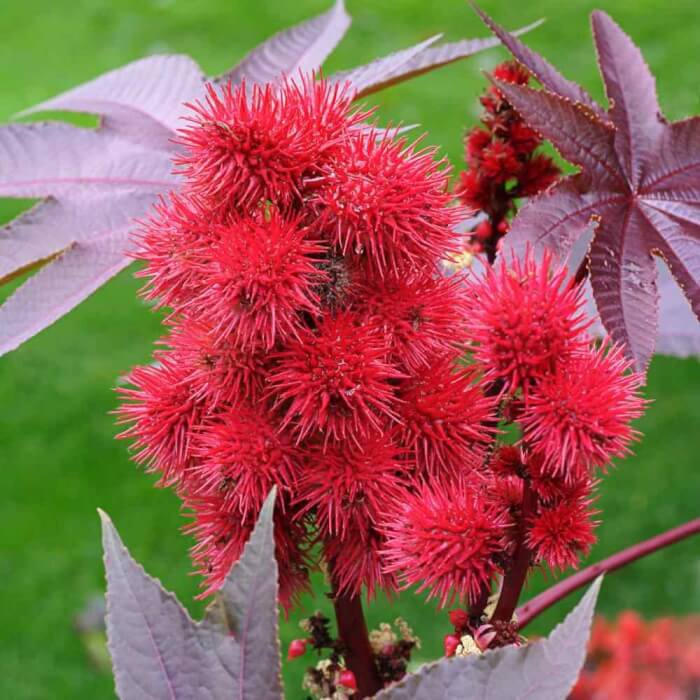
Castor bean plants produce seeds containing ricin, one of the most toxic compounds known. Just a few seeds can be fatal to an adult. Gloves and care are essential when removing seed pods.
Many gardeners avoid planting it entirely due to the high risk. If grown, it should be far from living spaces and secured against access.
#26 Belladonna
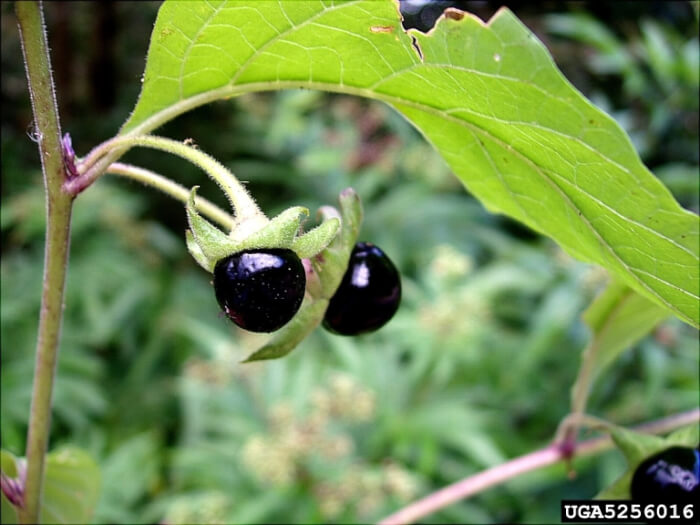
Also known as deadly nightshade, belladonna contains alkaloids that can cause blurred vision, rapid heartbeat, and convulsions. Its dark berries may tempt children, but they are extremely dangerous.
Avoid planting in areas with foot traffic. Gloves and long sleeves protect skin during removal. In many regions, it’s best treated as an invasive hazard.
#27 Hyacinth
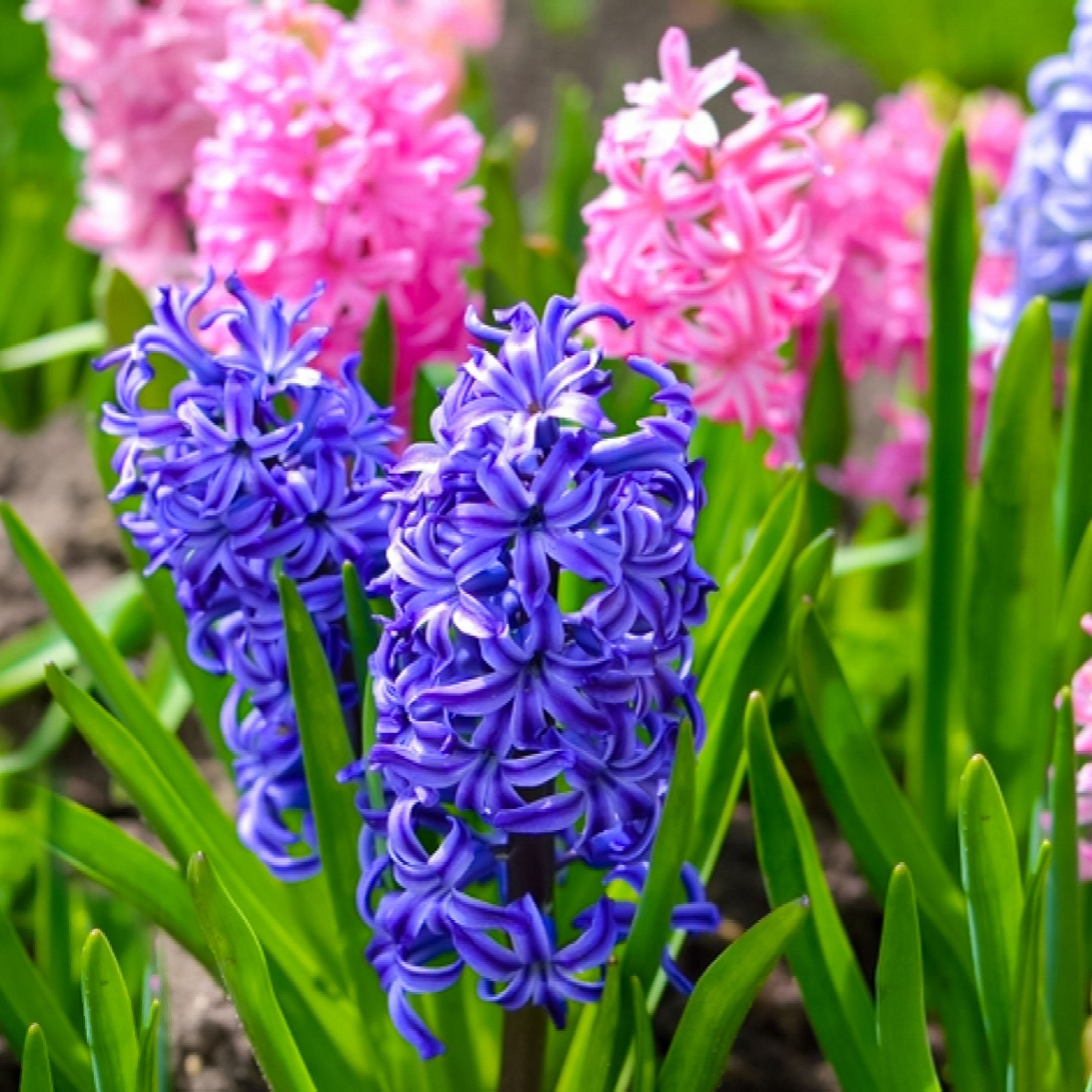
Hyacinth bulbs and flowers can cause skin irritation, vomiting, or diarrhea. Handling bulbs often leads to itching for sensitive gardeners. Washing hands after planting or dividing them is a safe habit.
Growing them in containers can help control access. Their scent remains a joy when enjoyed from a safe distance.
#28 The Peace Lily
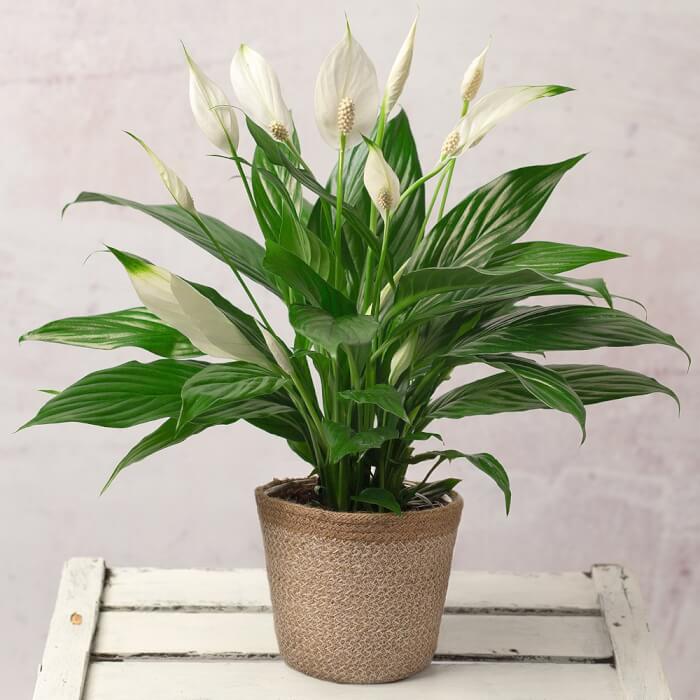
Peace lilies contain calcium oxalate crystals that can cause mouth irritation, drooling, and stomach upset. The white sap is especially irritating to eyes and broken skin.
Placing them out of reach is the safest option for homes with pets. Wearing gloves during repotting keeps hands comfortable. Wiping leaves with a damp cloth can maintain their shine without risk.
#29 Amaryllis
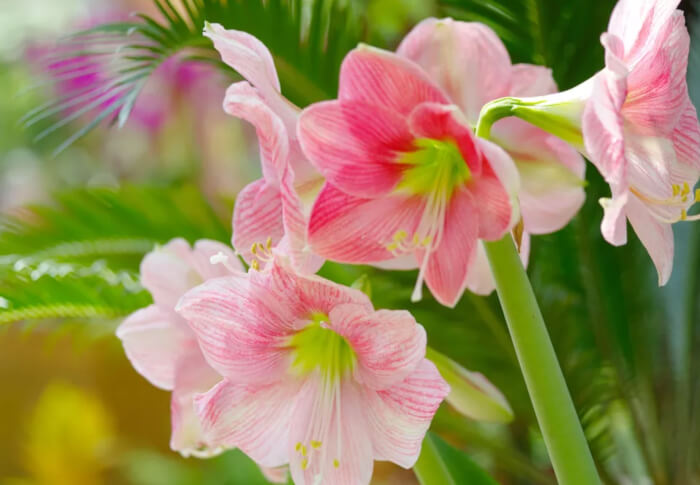
Amaryllis bulbs are the most toxic part, containing alkaloids that can affect the heart and nervous system. Eating them may cause vomiting, difficulty breathing, or even death in extreme cases.
Keeping them as holiday decor works best if pets are excluded from the area. Gloves protect against skin irritation during planting. All leftover bulb parts should be disposed of securely.
#30 Lily of the Valley
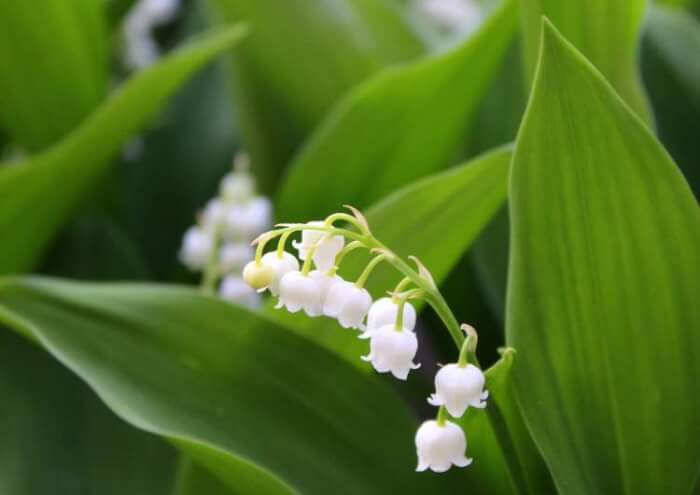
Lily of the Valley contains cardiac glycosides that can cause irregular heartbeat, headaches, and nausea. Even the water in a vase with these flowers can hold toxins.
Growing them in shaded, fenced beds keeps them both beautiful and secure. Gloves are wise for planting or dividing them. Promptly removing spent blooms reduces accidental contact with pets or children.
